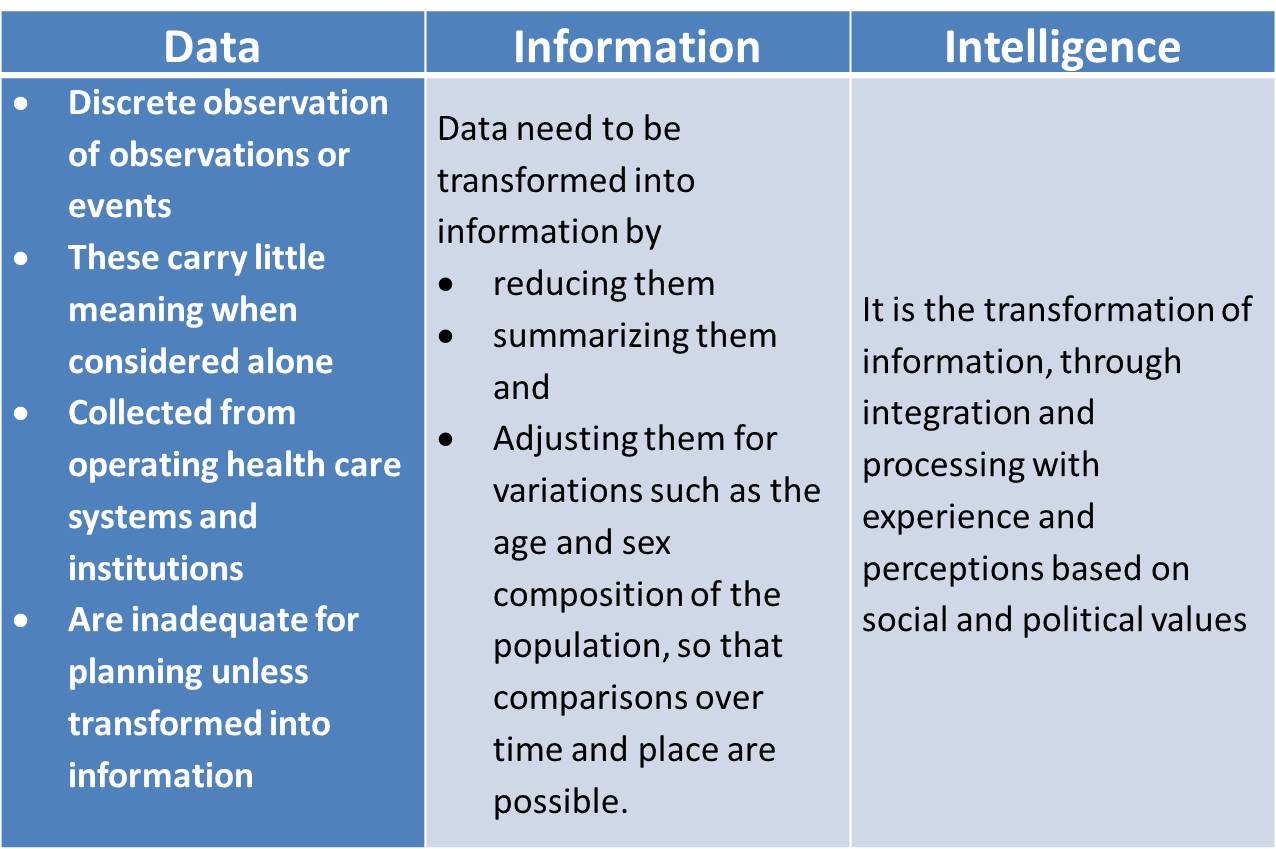
Health Information System (HIS)
For lecture on HIS click the link below:
http://www.ihatepsm.com/resource/health-information-system-his
For improving the efficiency of any health system, there is a requirement of relevant, timely, and accurate information on its current performance.
The purpose of health information system (HIS) is to provide this information. HIS is a tool of management.
HIS may be in place at various levels. It may be for one single hospital, a single district, State level, and National and International level
Defined as ‘a mechanism for the collection, processing, analysis and transmission of information required for organizing and operating health services and also for research and training’
Objective of HIS
1. Early detection of suspected disease outbreaks to enable timely initiation of response efforts.
• This has a role in reducing the numbers of cases and deaths during an outbreak.
2. Monitor trends in health status and identify changing health-care priorities:
• Monitoring health status allows health managers to observe trends in the health profile of a population, detect the emergence of new health problems and continually address public health priorities.
• Age, sex and cause-specific data allow planners to identify priority areas and groups within the population
• Assist planners in studying their current functioning and trends in demand and work load
3. To provide reliable, relevant, up-to-date, adequate, timely and reasonably complete information for health managers
• At all levels (i.e. central, intermediate and local) and
• Sharing of technical and scientific information by all health personnel participating in the health services of a country
4. To provide at periodic intervals, data that will show the general performance of the health services. i.e. Evaluating the effectiveness of health services
Unfortunately, it is still very difficult to get the information where it matters most i.e. at the community level.
In 1973, WHA stressed the need for complete reconstruction of the HIS

Data not transformed into information and information that is not transformed in to intelligence to guide decision makers, policy makers, planners, administrators and health care personnel themselves, are of little value.
Requirements to be satisfied by HIS
WHO expert committee identified following requirements
1. The system should be population based (P)
2. The system should avoid the unnecessary agglomeration of data (U)
3. The system should be problem oriented (P)
4. The system should employ functional and operational terms e.g. episodes of illness, treatment regimens, laboratory tests (O)
5. The system should express information briefly and imaginatively e.g. tables, charts, percentages and (E)
6. The system should make provision for the feedback of data. (F)
Suggested Mnemonic: PUP-FOE
(Health Information system is a PUP if adequate and FOE if too much or too little)
Components of a HIS
A comprehensive HIS requires information and indicators on the following subjects
1. Demography and vital events (D)
2. Environmental health statistic (E)
3. Health status: mortality, morbidity, disability and quality of life (S)
4. Health resources: facilities, beds, manpower (R)
5. Utilization and non-utilization of health services: attendance, admissions, waiting lists (U)
6. Indices of outcome of medical care and (O)
7. Financial statistics (cost, expenditure) related to the particular objective (F)
Suggested Mnemonic: RE – DO – FUS
(If all components of HIS are not reported you must RE-DO the FUSS)
Uses of HIS
1. To measure the health status of the people and to quantify their health problems and medical and health care needs (H)
2. For local, national and international comparisons of health status; for such comparisons the data need to be subjected to rigorous standardization and quality control (C)
3. For planning, administration and effective management of health services and programs (A)
4. For assessing whether health services are accomplishing their objective in terms of their effectiveness and deficiency (in other words for “evaluation” of health services) (E)
5. For assessing the attitudes and degree of satisfaction of the beneficiaries with the health system and (S)
6. For research into particular problems of health and disease (R)
Suggested Mnemonic: SEARCH
(to SEARCH for information use HIS)
for lecture on HIS: http://www.ihatepsm.com/resource/health-information-system-his
